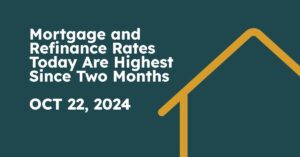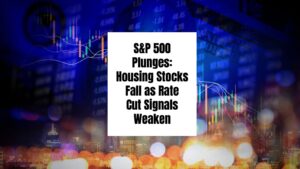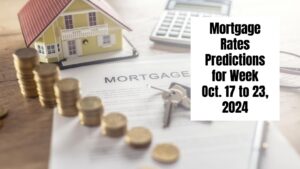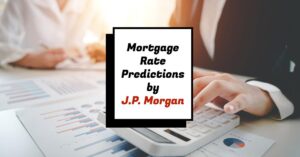The question, “Will Gen Z ever afford to move out?” hovers in the minds of many young adults today. As members of Generation Z step into adulthood, they're facing a rental market that feels almost inaccessible. With rising rents, scarce affordable housing, and a surge in new household formations, many wonder if they can afford to live independently without breaking the bank. Let’s explore this complicated situation in detail.
Housing Crisis Explained: Will Gen Z Ever Afford to Move Out?
Key Takeaways
- Generation Z represents about 68 million individuals in the United States.
- Rising rents have created a record number of cost-burdened households, with 22.4 million renters spending over 30% of their income on housing.
- While housing stock has increased recently, it remains below pre-pandemic levels, limiting options for those seeking homes.
- The slowdown of new construction is posing a challenge for first-time homebuyers and renters alike.
- Collaboration among stakeholders is essential to address the affordability crisis and related housing issues.
Understanding the Housing Crisis for Gen Z
As of 2024, Generation Z, also known as Gen Z, consists of individuals born between 1995 and 2009. Many of them are now entering the rental market, eager to find spaces of their own. However, the challenge of affording to move out has never been greater.
The recent report from the Center for Housing Studies at Harvard University highlights that Gen Z is rapidly forming new households, marking a significant lifestyle shift. Unfortunately, this change is not happening in isolation; it is occurring amid a housing crisis that shows no signs of letting up.
Recent statistics paint a stark picture. Approximately 22.4 million renter households now allocate more than 30% of their income toward housing expenses (Realtor.com®).
This classification of being “cost-burdened” is indicative of a broader trend affecting many young adults. The situation becomes even grimmer when we look at the 12.1 million households paying more than 50% of their income in rent, illustrating the extreme financial stress many renters are under.
The median rent nationally for a two-bedroom apartment has soared to $1,933, creating a significant barrier to entry for new renters. Many individuals in Gen Z, loaded with student debt and limited job opportunities, simply cannot keep up with these rising prices. It begs the question: how can a generation poised for independence manage to break free from parental homes when their financial circumstances make it so daunting?
Recommended Read:
Housing Affordability: Nearly 80% of Americans Face This Crisis
The Demand vs. Supply Challenge
Despite the disheartening circumstances many face, there exists a glimmer of hope as the overall housing stock has increased recently. The current supply of homes is now around a four-month level, meaning that if no new homes come on the market, it would take that long to sell through current inventory. While this might signal a slight improvement, it's essential to bear in mind that it's still below pre-pandemic levels, which adds complexity to the market.
One complicating factor is that even though we see more homes available, the tight inventory continues to strain prices, creating fewer choices for those who desperately need affordable housing.
Much of the issue lies in the slowdown of new construction. Last year, we saw some positive momentum in building new homes, which usually helps alleviate some of the pressure on the rental market. However, the recent report indicates that this has come to a near halt. Single-family housing starts are dwindling, leading to a distressing scenario where first-time homebuyers and renters face an increasingly competitive market with fewer options.
Many people might assume that new homes could offer relief, especially since builders are known to create incentives like mortgage rate buy-downs to attract buyers. Yet, that isn’t the whole picture. The current lack of new construction is especially challenging for Generation Z as they are more likely to be looking for affordable, entry-level housing. Coupled with increasing rents, this leaves many young adults stuck living at home longer than anticipated.
Recommended Read:
Trump Claims Explosive Housing Crisis Under Biden: Is It Exaggeration?
The Broader Implications of the Housing Crisis
The implications of the housing crisis stretch far beyond just a lack of affordable rentals for Gen Z. As the report notes, a growing percentage of people are experiencing homelessness or living in precarious situations due to housing instability, which is most severe for marginalized communities. The impact of rising costs has made it incredibly difficult for young people to achieve traditional milestones, such as buying a home, starting a family, and securing stable employment.
Housing inequality has deep-seated causes that need to be addressed collectively. The burden of unaffordable rent falls disproportionately on younger generations, creating a discrepancy between them and prior generations who, in many cases, benefitted from more favorable market conditions. Such disparities highlight issues of social equity, as Gen Z must combat obstacles that previous generations did not face to the same degree.
Moreover, the housing crisis runs parallel to various social issues, including rising student loan debt. Many younger individuals are already burdened with significant debt, making it even harder to save for a down payment or meet monthly rent payments. Therefore, as Gen Z strives to establish independence, they find themselves caught between the urgency to earn, save, and finally break free from the nest.
The Call for Urgent Action
In their report, the researchers underline the need for an urgent and collaborative approach to tackle the affordability crisis. Multiple stakeholders must unite to find solutions that can alleviate the financial pressures young adults face. Working together, policy makers, real estate developers, non-profits, and community leaders could help establish a more robust safety net for housing, ultimately setting the groundwork for sustainable solutions.
Investing in affordable housing is critical; creating incentives for new construction focused on lower-income brackets could foster a more inclusive market for all generations. Additionally, regulatory reforms might help facilitate easier pathways for renters and buyers, ensuring that their voices are heard.
Addressing the housing crisis requires a comprehensive understanding that overlooks simplistic answers. Housing is not just a commodity; it is a fundamental need. The growing urgency of this issue calls for innovative methods, such as incorporating sustainable housing practices that consider climate change while maintaining affordability.
Also Read:
- Will Federal Cap on Rent Hikes Solve or Worsen Housing Affordability?
- Will Housing Affordability Improve in 2024?
- Biden's 5% Rent Cap Plan Will Provide Relief for Renters Amid Housing Crisis
- Best Time to Buy a Home in 2024 is From Sept 29 to Oct 5
- Best Time to Buy a House in the US: Timing Your Purchase
- Should I Buy A House Now Or Wait Until Later 2024? It a Good Time?
- Is Now a Good Time to Buy a House with Cash
- Is It a Bad Time to Buy a House?
- Is it a Good Time to Buy a House in California in 2024?
- Is It a Good Time to Sell a House or Should I Wait in 2024?
- Is Now a Good Time to Invest in Rental Property (2024)?
- Is 2024 a Good Time to Buy an Investment Property?











